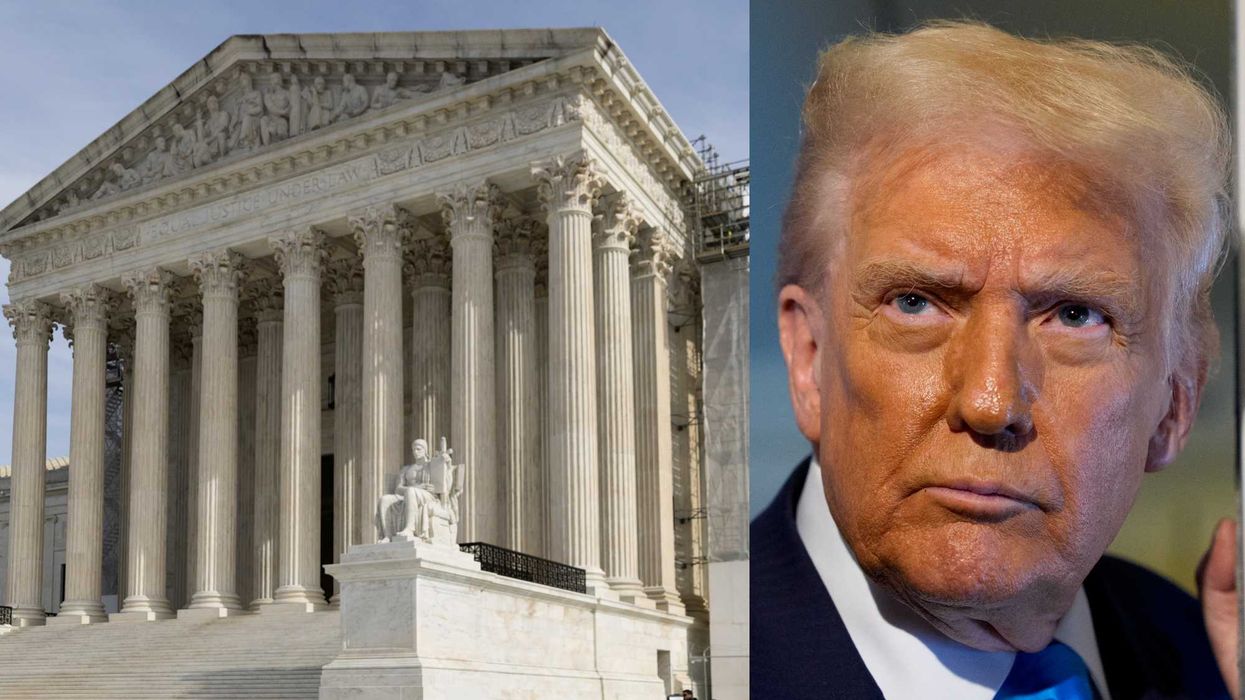
© 2025 Blaze Media LLC. All rights reserved.
Recession-resistant companies are also often part of recession-resistant industries.
With fears of a new economic downturn, investors are becoming worried about sales and profits of large companies. And it's a legitimate concern.
However, there are some companies that have proven to be immune to the effects of a recession and they have some common qualities: they offer investors income through dividend and they are usually positioned well within their global industries.
The best stock investments for periods when GDP stalls are those of corporations that proved they could boost their sales during the 2007-2009 recession.
Recession-resistant companies are also often part of recession-resistant industries. Many of these industries’ sales come from a number of countries around the world. Their sales may slow in the U.S. and Europe, but remain strong in emerging nations.
The companies on this list were picked by choosing:
- Corporations with revenue that grew during the last recession or where sales dropped slightly and profits rose
- Companies in industries that have historically not been sensitive to changes in the economy
- Corporation that have demonstrated they have the balance sheet to pay large cash dividends
- Corporations that are large enough to be among the most dominant companies by sales or market share within their sectors
- Stocks that trade within 10 percent of their 52-week highs.
With the S&P 500 near a one-year low, these are the companies that Wall Street thinks will do well over the next several quarters (as researched and compiled by the staff of 24/7 Wall St.):
 Kimberly-Clark
Kimberly-Clark
Industry: consumer goods
Dividend yield: $2.80 (3.90 percent)
Revenue first half: $10.288 billion
Net income first half: $758 million
Kimberly-Clark Corp. owns some of the best-known brands in the U.S. consumer products sector. Personal care products such as Kleenex, Kotex, Huggies, and Depends are household staples. The company is counted among the Standard & Poor’s Dividend Aristocrats, an index of 42 companies that have increased dividends every year for at least 25 years. Strong personal care brands with which customers have developed a relationship over a long period of time are almost guaranteed to carry Kimberly-Clark through any recessionary downturn. Perhaps the most important indication that Kimberly is not affected by the economic climate is that both its sales and net income grew through the last recession.
 Colgate-Palmolive
Colgate-Palmolive
Industry: consumer goods
Dividend yield: $2.32 (2.60 percent)
Revenue first half: $8.179 billion
Net income first half: $1.198 billion
Colgate-Palmolive Co. also includes a vast stable of well-known personal and home care products, as well as pet nutrition products. Detergent Fresh Start, Colgate toothpaste, Mennen deodorants, and Hills pet foods are among the company’s brands. The company posted a new 52-week high in mid-September following an announcement that it would repurchase 50 million shares of common stock. As with other consumer products stocks, the value of Colgate-Palmolive products resides in its customers’ loyalty, and the fact that most of these are inexpensive items most people cannot do without. As the economy turned down, Colgate’s revenue rose from $13.8 million in 2007 to $15.6 million last year.
 Procter & Gamble
Procter & Gamble
Industry: consumer goods
Dividend yield: $2.10 (3.30 percent)
Revenue first half: $41.09 billion
Net income first half: $5.383 billion
Proctor & Gamble Co., like the other consumer products companies on this list, offers brands that are household names. Tide laundry detergent, Gillette razors, Iams pet foods, and Bounty paper products are just a few of them. Like Kimberly Clark, P&G is included in S&P’s Dividend Aristocrats index. P&G could well be the leading consumer products marketing company in the U.S., if not the world. P&G’s product management skill, coupled with its strong brands help maintain sales. The company has also lowered some of its prices to keep its customers during tough times and to keep volume high. Although P&G’s sales dipped in its fiscal 2008, they rose from 2007 to 2011. The company’s financial strength allowed it to pay down $1 billion in long-term debt over that same period.
 Abbott Laboratories
Abbott Laboratories
Industry: pharmaceuticals
Dividend yield: $0.48 (3.8 percent)
Revenue first half: $18.657 billion
Net income first half: $2.806 billion
Abbott Laboratories makes a variety of pharmaceutical and nutritional products, medical devices, and diagnostic instruments and tests. Some of its best known brands are pain reliever Vicodin and nutritional products Pedialyte and Ensure. Abbot Labs is also included among the S&P Dividend Aristocrats. The company operates in more than 130 countries. The need for medical equipment and essential drugs are not greatly impacted by a slow economy. Abbott’s net income rose 28 percent between 2007 and 2010.
 Bristol-Myers Squibb
Bristol-Myers Squibb
Industry: pharmaceuticals
Dividend yield: $1.32 (4.20 percent)
Revenue first half: $10.445 billion
Net income first half: $1.888 billion
Bristol-Myers Squibb Co. may not exactly be a household name, but a couple of its prescription drugs are. The company’s Plavix is one of the best selling blood pressure medicines in the world and its Abilify anti-depressant is among the leaders in its field. The company continues to develop new drugs to treat illnesses that affect large numbers of people. Like Abbott, Bristol’s global reach and its strong product portfolio give it substantial protection from recession. Sales of the company’s cardiovascular drugs Plavix and Avapro rose sharply during the recent downturn, and Bristol-Myers sharply increased margins by cutting $2.5 billion in expenses over the last two years.
 Johnson & Johnson
Johnson & Johnson
Industry: pharmaceuticals
Dividend yield: $2.28 (3.60 percent)
Revenue first half: $32.77 billion
Net income first half: $6.252 billion
Johnson & Johnson lays claim to a seat in the both the consumer products and drug sectors. The company’s brands include Tylenol, Band-Aid, Rogaine, and Listerine. Prescription drug products include Topamax for migraine and Procrit for anemia in dialysis patients. J&J also makes medical devices, including prostheses and stents. The company is among the S&P Dividend Aristocrats. J&J’s OTC sales have been hurt in the last several quarters because of product recalls. Losses of the sales of those products have been more than offset by revenue improvement from its medical devices and pharmaceutical divisions. Revenue rose from $61.1 billion in 2007 to $61.6 billion last year.
 General Mills
General Mills
Industry: food
Dividend yield: $1.22 (3.20 percent)
Revenue first half: $7.494 billion
Net income first half: $797.7 million
General Mills Inc. owns some of the best selling food brands in the U.S. Cheerios and Wheaties are two of its better known cereal brands. The company also makes Betty Crocker and Pillsbury branded foods, as well as Yoplait yogurt products. The breadth and depth of the company’s cereal and grain products provide diversity in terms of revenue sources. General Mills also sells its products in 130 countries, which gives it the ability to capitalize on expansion in developing markets where GDP growth is faster than in the U.S. or Europe. General Mills revenue rose each year from fiscal 2007 to fiscal 2011.
 McDonald’s
McDonald’s
Industry: food
Dividend yield: $2.80 (3.20 percent)
Revenue first half: $13,017 billion
Net income first half: $2,619 billion
McDonald’s Corp. operates more than 33,000 stores in 118 countries around the world. Dining out in tough economic times tends to send customers to lower priced options that offer consistent value. That is one of the company’s greatest advantages. McDonald’s ranks first in revenue among all fast food companies in the world, and is second only to Subway in terms of locations. Revenue growth during the recession was helped by the company’s presence in the rapidly growing China market where it had 1,100 stores as of the end of 2010. McDonald’s also used product innovation, particularly the addition of a large breakfast menu and coffees to increase sales. The company’s revenue grew from $22.8 billion in 2007 to $24.1 billion last year. McDonald’s is among S&P’s Dividend Aristocrats.
 Coca-Cola
Coca-Cola
Industry: food
Dividend yield: $1.88 (2.80 percent)
Revenue first half: $23.254 billion
Net income first half: $4.697 billion
Coca-Cola Corp. owns or licenses more than 500 brands of non-alcoholic beverages world-wide. The cost of a soft-drink is rarely too high to keep consumers away. And to further ensure customers buy its products, Coca-Cola is offering smaller packages that sell for lower prices. In some markets, the company has reduced the size of its containers to hold prices steady while offering the consumer slightly less product-per-can. Coke’s sales are helped by its diversification into the snack business. It has also successfully increased revenue in Africa, Mexico, Russia, and China. Coca-Cola is among the S&P Dividend Aristocrats.
Read the Rest of the List Here.
(Paul Ausick, Douglas A. McIntyre, and Charles Stockdale/Becket Adams--24/7 Wall St./The Blaze)
Want to leave a tip?
We answer to you. Help keep our content free of advertisers and big tech censorship by leaving a tip today.
Want to join the conversation?
Already a subscriber?
more stories
Sign up for the Blaze newsletter
By signing up, you agree to our Privacy Policy and Terms of Use, and agree to receive content that may sometimes include advertisements. You may opt out at any time.
Related Content
© 2025 Blaze Media LLC. All rights reserved.
Get the stories that matter most delivered directly to your inbox.
By signing up, you agree to our Privacy Policy and Terms of Use, and agree to receive content that may sometimes include advertisements. You may opt out at any time.






